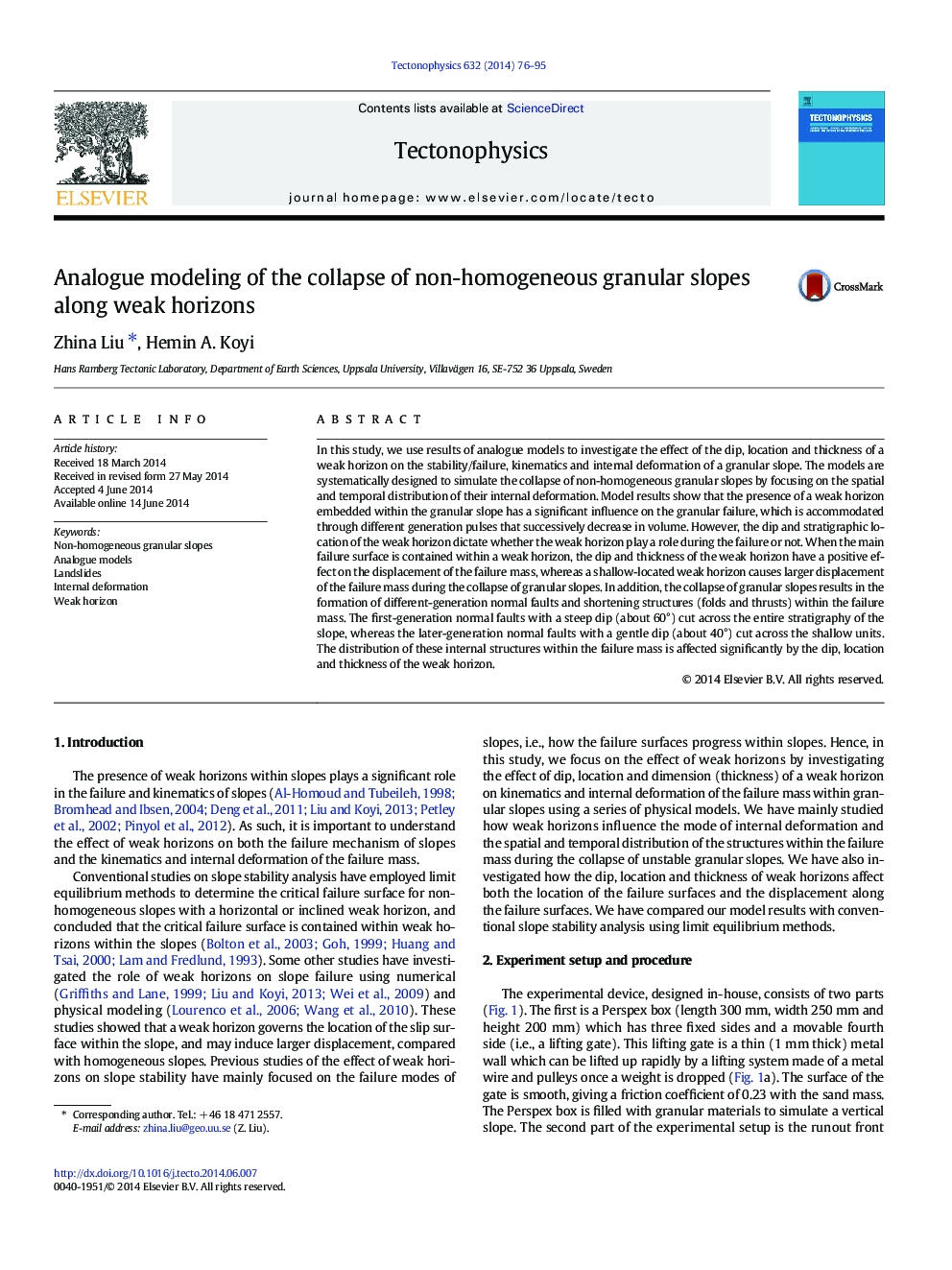| کد مقاله | کد نشریه | سال انتشار | مقاله انگلیسی | نسخه تمام متن |
|---|---|---|---|---|
| 4691851 | 1636759 | 2014 | 20 صفحه PDF | دانلود رایگان |
• We investigate the effect of dip, location and thickness of a weak horizon on 4-D granular slope deformation.
• Granular slopes collapse in different pulses along different-generation sliding surfaces (faults).
• First-generation normal faults which are steep cut across the entire stratigraphy of the slope.
• Later-generation normal faults are gently dipping and cut across the shallow units.
In this study, we use results of analogue models to investigate the effect of the dip, location and thickness of a weak horizon on the stability/failure, kinematics and internal deformation of a granular slope. The models are systematically designed to simulate the collapse of non-homogeneous granular slopes by focusing on the spatial and temporal distribution of their internal deformation. Model results show that the presence of a weak horizon embedded within the granular slope has a significant influence on the granular failure, which is accommodated through different generation pulses that successively decrease in volume. However, the dip and stratigraphic location of the weak horizon dictate whether the weak horizon play a role during the failure or not. When the main failure surface is contained within a weak horizon, the dip and thickness of the weak horizon have a positive effect on the displacement of the failure mass, whereas a shallow-located weak horizon causes larger displacement of the failure mass during the collapse of granular slopes. In addition, the collapse of granular slopes results in the formation of different-generation normal faults and shortening structures (folds and thrusts) within the failure mass. The first-generation normal faults with a steep dip (about 60°) cut across the entire stratigraphy of the slope, whereas the later-generation normal faults with a gentle dip (about 40°) cut across the shallow units. The distribution of these internal structures within the failure mass is affected significantly by the dip, location and thickness of the weak horizon.
Journal: Tectonophysics - Volume 632, 29 September 2014, Pages 76–95
